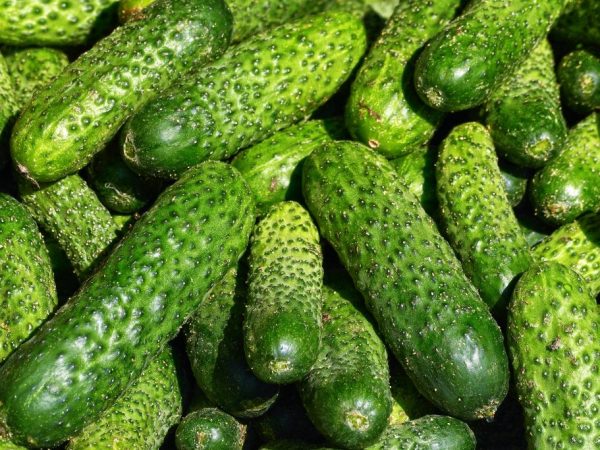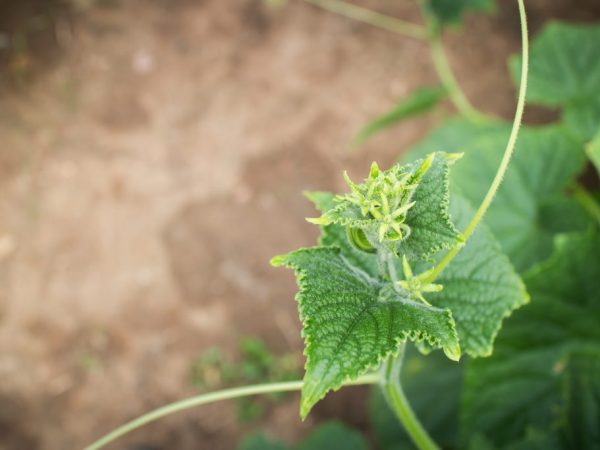Description of Asterix cucumber
The Asterix cucumber is a hybrid plant with medium ripening times. The variety was first developed in the Netherlands. Within a few years, almost every second gardener knew about the cucumber Asterix f1. He became famous for his excellent taste and percentage of fruiting.

Description of Asterix cucumber
Characteristics of the variety
Cucumber Asterix is a hybrid plant that grows on bee pollination and can perfectly adapt even to the most severe and unfavorable living conditions.
Already in 1998, the plant was entered into the state register of the Russian Federation in two regions: Central and Central Chernozem. These plots are officially suitable for growing these types of cucumbers.
The main uniqueness of the variety is the fact that it multiplies by bunching, this is when a large percentage of the first cucumbers are concentrated on the main pillar, and there are several lateral shoots, but they are poorly developed, therefore they rarely ripen to the end.
Cucumbers Asterix f1 are strong and stable fruits, they like the sun, but the seedlings do not like direct rays, so they must first be in the shade. Then, after a while, the ripening of the first fruits will depend on the sun.
For such cucumbers, it does not matter what kind of climate, they can adapt to everything and germinate fruits. Asterix gherkins are perfect for eating fresh, as well as for cooking various preserves from them. Also, this type of cucumber retains its presentation for a long time.
Description of the plant
From the moment of planting to the moment of harvesting the first harvest, it takes from 47 days to 55. This is the average percentage of ripening. The bushes are small, female flowering dominates in the plant, and there is also a fairly strong root system, thanks to which cucumbers will be able to survive and receive vitamins in any conditions.
The leaves are also small in size, with an average percentage of wrinkling, a deep green color, and along the edges of the leaves with a slight amount of waviness.
Description of the fetus
All fruits are cylindrical, slightly ribbed, tuberous with white thorns, slightly rounded in cross section, weighing from 60 to 100 grams. If we compare the length of all fruits to the diameter, then this is 2.9: 1.
The pubescence of the variety is rather rare, the skin is green, with a slight spotting and small stripes of medium length. On average, the marketable productivity of the bush is 132 and up to 322 kg / ha, this figure is much higher than that of many other natural varieties.
The variety is universal, suitable for many summer salads and preparations, such a hybrid is resistant to drought, as well as to many diseases. Due to the constant fruiting, it is necessary to regularly collect the fruits.
Benefits
The variety is famous for its versatile directions, it is perfect both for pickles and for rolling and fresh salads. This type of hydride perfectly tolerates both strong moisture and drought, so it is perfect for planting in the southern regions.

The variety is resistant to diseases
One of the most positive aspects of such a hybrid is excellent immunity against diseases, the variety has a high percentage of fruiting, so experts advise to immediately remove the fruits that are ripe.
Positive sides:
- excellent taste of all fruits;
- high percentage of disease resistance;
- constancy and stability of fruiting.
Such a hybrid has only one negative side, it is that if the ripe fruits are not collected in time, they will all die, and the new ones will not be able to grow and ripen in time.
Planting methods
On average, the seeds of this species are the same in size, they all sprout equally and germinate quickly in the ground. It is also important that the soil is always fertilized. You can plant fruits in two ways:
- direct sowing;
- seedling scheme.
Direct sowing
This type of sowing is best done in mid-May. Sometimes these seeds are treated with a fungicide before being packaged and packaged in bags. This is how future seedlings are protected from the possibility of infection by the fungus.
Therefore, before planting, read on the label whether the seeds have been processed. If not, then it is imperative to carry out such processing yourself. For such a procedure, you will need to purchase solutions of potassium permanganate, but only 1%. Put the seeds in the solution for a few minutes, then put them in warm water, for 15 minutes. After all the procedures, select the largest fruits and set them aside for planting, remove all the small ones, you will not need them.
Once the seeds are dry, they can be immediately planted in the soil. Use wet sawdust as an additional fertilizer. It is best to plant the seeds themselves no deeper than 2 cm.In the event that you will use the hole type of planting, then plant two grains in one hole. Do not forget to keep the distance between planting at 12 cm, and between the beds 60 cm.
Seedlings
Experts say that this method is used in order to get the very first fruits as early as possible. In addition, cucumbers can be grown in this way, both at home and in greenhouses. In order for everything to go well and you get strong fruits, you must follow these rules:
- as mentioned earlier, do not sow seeds without treatment;
- for planting, use a land-type seedling mixture, it is also best to prepare it yourself at home: for this you will need to mix a certain amount of sand, peat and a little soil from the site;
- after that, you will need to process the heat of the earth, which you have already prepared;
- seeds cannot be planted no deeper than 1.5-2 cm;
- keep the optimum temperature - this is 21-25 ° C;
- constantly adhere to the greenhouse effect: it is very easy to create it, you just need to wrap the seeds with a film and constantly puff;
- as soon as the first leaves appear on the plant, it is necessary to immediately reduce the temperature to 18-19 ° C;
- under no circumstances use any container from fermented milk products for transplantation.
Growing and care
To get a large and beautiful fruit, you need to know the main rules for caring. In the event that you follow them, you can expect a large percentage of yields.
- The fruits love moisture, so water the bushes constantly, preferably 4 to 6 times a week. The soil should never be dry.
- Fertilize the soil with complex vitamins once a month.
As the description shows, Asterix is an excellent plant that is suitable for any climate and soil, the main thing is to constantly water and fertilize the plants.


